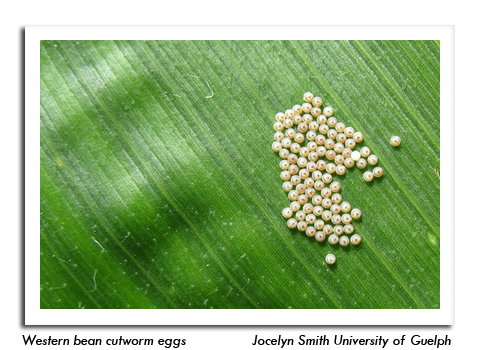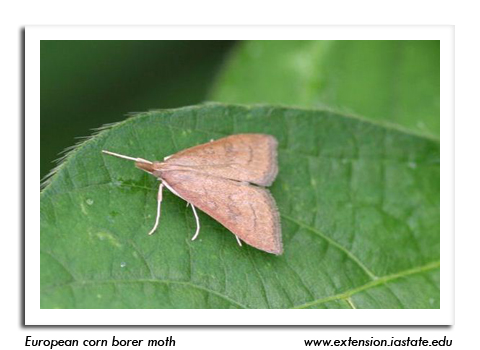
 |
|
|
Corn
Volume 63 Number 11 Date 07/12/2018 CORN EARWORM - Pheromone traps in Dane, Dodge, and Fond du Lac counties registered low counts of 1-13 migrants, and a weekly total of 25 moths in six traps. Six other monitoring sites reported zero moths this week. The economic threshold for this pest is 5-10 moths in three consecutive nights for corn, and seven per trap per week for tomatoes. Counts from July 5-11 were as follows: Arlington 0, Beaver Dam 6, Cottage Grove 2, Hancock 0, Janesville 0, Madison North 1, Marshfield 0, Prairie du Chien 0, Ripon 13, Sun Prairie 2, Watertown 1, and Wausau 0. JAPANESE BEETLE - The annual emergence is well underway. Beetles are common in corn, soybeans, and fruit crops, and perimeter damage can be expected later this month. Low counts of 1-20 beetles per 100 plants were found in the edges of several cornfields in Green, La Crosse, Monroe, Sauk, Rock, Trempealeau and Walworth counties this week, and beetles were observed at about 42% of the sites surveyed. For corn, the primary concern is to protect the silks from clipping since heavy beetle feeding on corn silks can impair pollination. Treatment may be justified for fields with three or more beetles per ear and silks that have been clipped to ½ inch when pollination is occurring (less than 50% complete). Japanese beetles aggregate on plants in the edge rows, emphasizing the importance of obtaining a representative sample from several areas throughout the field before making control decisions. Border row spot treatments may be sufficient if the beetles and damage are confined to the field edges. Beetles must be on the outside of the ear to be killed by contact insecticides. WESTERN BEAN CUTWORM - Moth emergence continued for the fourth week, with very low counts reported as far north as Wausau in Marathon County. The DATCP network of 54 pheromone traps captured only 21 moths, for a cumulative total of 27 moths since the flight began around June 20. Peak flight, or 50% adult emergence, should occur over the southern half of the state in the next two weeks. Oviposition on corn and dry beans is expected to increase as the moth flight escalates. In rare fields where egg masses and small larvae are found on 5% or more of the corn plants, an insecticide treatment applied at 90-95% tassel emergence will be most effective. This application timing increases the chance that the caterpillars will be exposed to the insecticide. Routine scouting should continue throughout the month. CORN ROOTWORM - Beetles of the northern and western species have been noted in Dane, La Crosse, and Rock counties since the last report. Results of last summer's beetle survey suggest overall larval rootworm populations, and the threat of root damage to continuous corn, could be down this season when compared with 2017. TRUE ARMYWORM - Larvae are somewhat common in low numbers in corn and alfalfa. DATCP surveys indicate that infestation rates range from 1-8% and are still well below the 25% treatment threshold. Nevertheless, these recent field observations emphasize the need for continued scouting of corn and lodged grains. EUROPEAN CORN BORER - The second flight began from June 28-July 4, with captures of 9-46 moths reported from the Beaver Dam, Pardeeville, Ripon and Sparta black light trap sites. Counts were lower at most sites this week (<16 per trap), with the exception of Pardeeville in Columbia County where a total of 108 ECB were collected. The appearance of summer moths signals that eggs are being deposited on corn, peppers, potatoes, snap beans and other vegetable hosts. If seasonal temperatures continue, black light traps could register peak emergence during the second week of August in portions of the southern and central districts. The treatment window for second generation larvae extends from 1,550-2,100 degree days (modified base 50°F). -- Krista Hamilton, DATCP Entomologist 





|
|
|